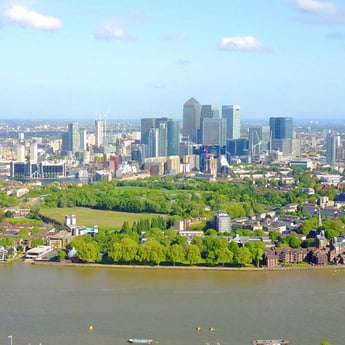What does Mayor Khan stepping in over rejected housing schemes mean for housing delivery in the Capital?

The decision of the Sadiq Khan, the Mayor of London, to use his powers to recover two planning applications from the same borough at the same time is a landmark moment of his administration. Furthermore, this is the first time any Mayor of London has called-in an application in the Royal Borough of Greenwich, making the move unprecedented.
Collectively, the regeneration schemes at Anchor and Hope Lane in Charlton Riverside and Eynsham Drive in Abbey Wood, both promoted through planning by GVA, would deliver 1,043 new homes, with both offering 35% affordable homes.
The site in Charlton is particularly significant, as it would be the first to come forward for new housing development in the Charlton Riverside Opportunity Area, as well as unlock the potential of other neighbouring sites located more centrally within the current industrial area. The draft London Plan has increased its minimum housing delivery targets for both Charlton Riverside and Abbey Wood to 8,000 homes, which represents an additional 9,500 homes just in these areas.
So why has Khan chosen to call in these particular schemes, and what is the significance of the intervention?
For a start, both schemes have demonstrated strong commitments to delivering the Mayor’s 35% affordable housing target, which is a strategic priority. The large quantum of homes that are proposed to be delivered is a factor, but more importantly, its within a borough that has underperformed against its housing targets in recent years. Delivering high quality design principles is a must, and increasing the potential number of jobs was strongly encouraged. Throughout the application process, the developers on both schemes have shown that they are prepared to listen to the voices of local people and make changes to their proposals where an alternative solution can be agreed.
The decision comes at a time when housing delivery is firmly the name of the game, with the recently revised National Planning Policy Framework (“NPPF”) making a number of amendments to expedite this process.
In this context, many will read this as a signal of intent from the Mayor that demonstrates that he is prepared to take action to deliver his objectives set out in the revised draft London Plan, but more crucially, remove obstacles to providing the required levels of housing for the capital, even if this proves unpopular in certain quarters.
This is certainly welcome news to London’s housing developers, who will be cautiously optimistic that there could be further call-ins in the interests of speeding up housing delivery.
Looking ahead, the GLA now assumes the role of the Local Planning Authority. There will be a Public Hearing where residents will again be given the opportunity to make their case, this time to the Mayor directly.
